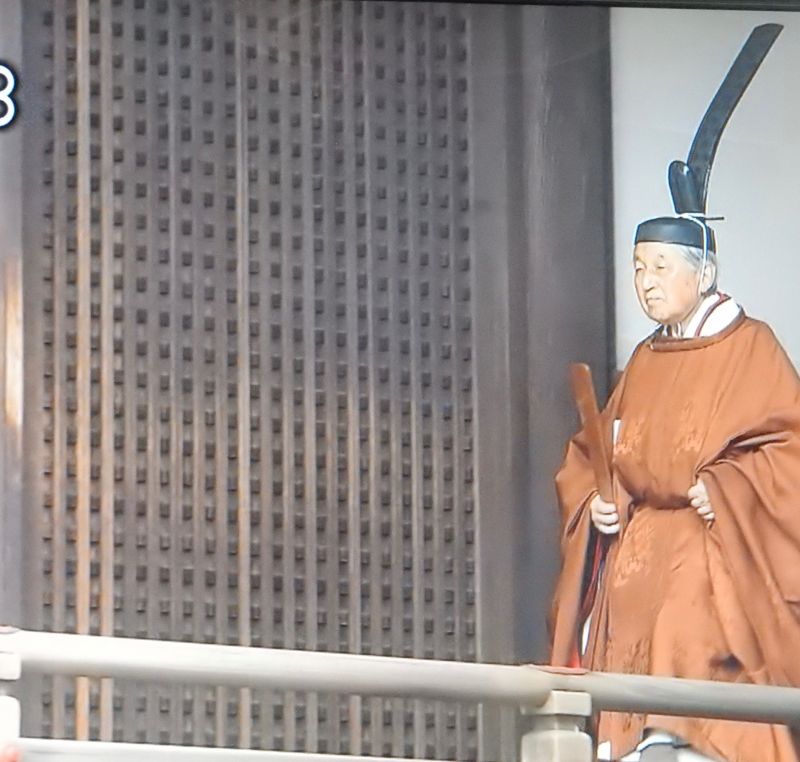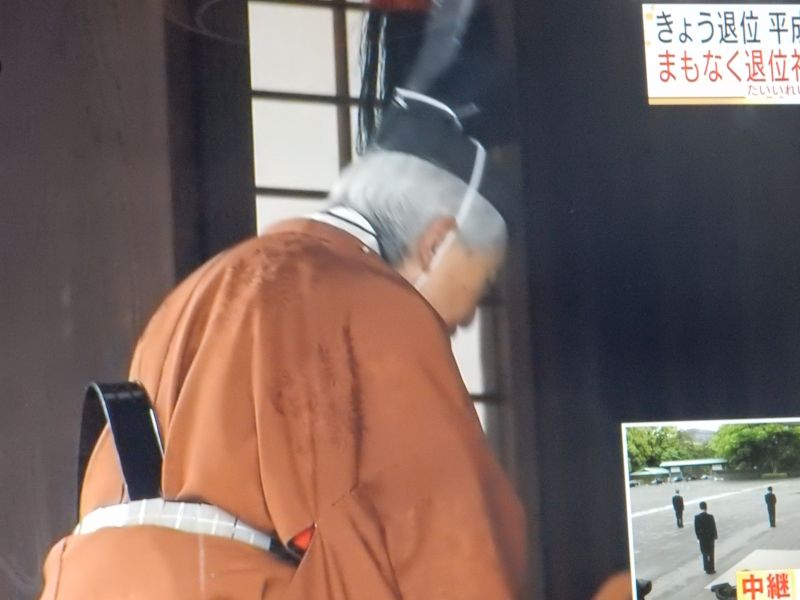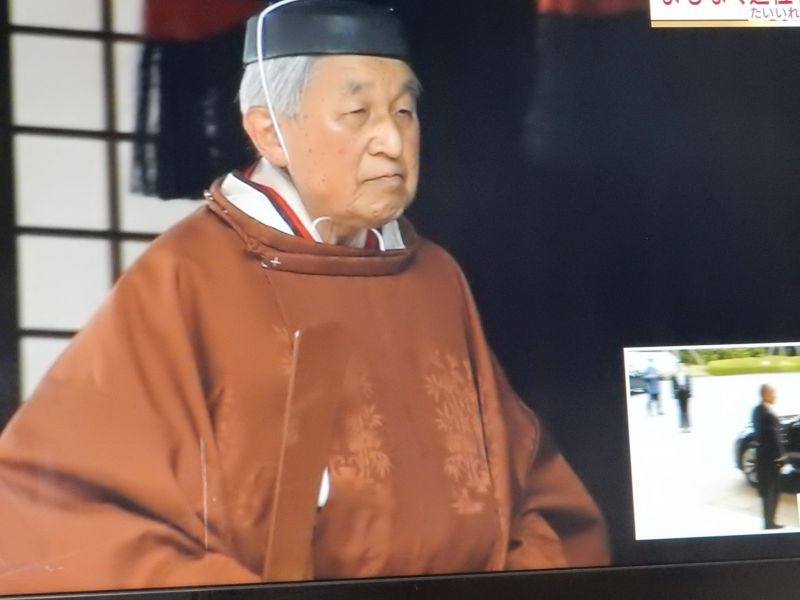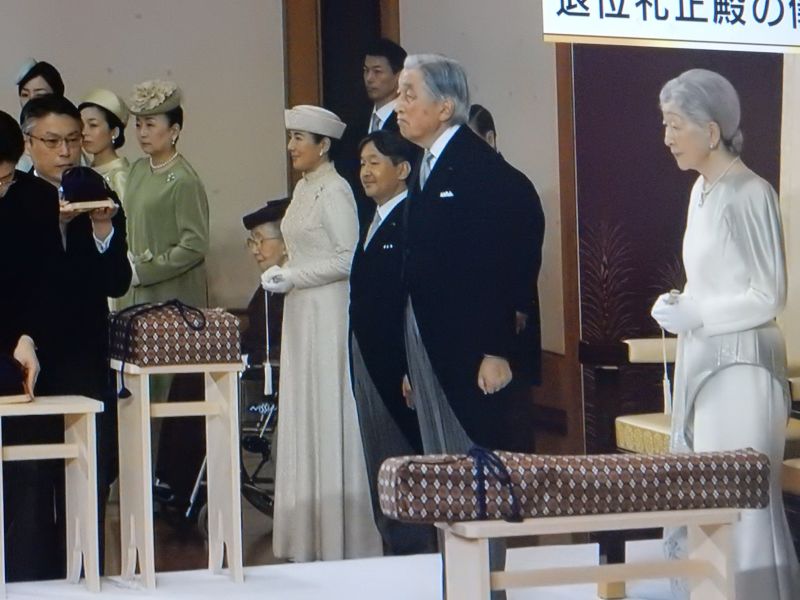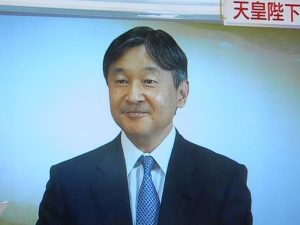 This morning we enter a new historical period called Reiwa as Emperor Naruhito begins his reign. It’s a very different feel from the beginning of the Heisei Era in 1989, as there is no death preceding the ascension of the new emperor – for the first time in 200 years. The sense of change is enhanced by the attendance at this morning’s ritual by a woman. Though female members of the imperial family are not allowed to participate, those in attendance included a female member of the cabinet. – an historical first (see below). Just over five minutes for the whole ceremony, and not a single word spoken! Would that every Japanese ceremony were like that…
This morning we enter a new historical period called Reiwa as Emperor Naruhito begins his reign. It’s a very different feel from the beginning of the Heisei Era in 1989, as there is no death preceding the ascension of the new emperor – for the first time in 200 years. The sense of change is enhanced by the attendance at this morning’s ritual by a woman. Though female members of the imperial family are not allowed to participate, those in attendance included a female member of the cabinet. – an historical first (see below). Just over five minutes for the whole ceremony, and not a single word spoken! Would that every Japanese ceremony were like that…
************
Extract from Japan Times May 1, 2019
In a ceremony to be held Wednesday morning [May 1], the new emperor will inherit the regalia — as well as the state and privy seals — as proof of his accession to the throne.
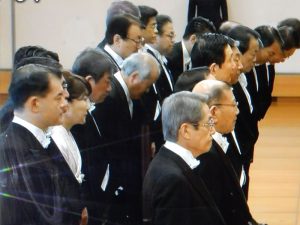
Spot the lone female in attendance…
While it will be attended by male adults from the imperial family, the event will be off-limits to its female members, including the new empress, taking a page from the last inheritance ritual in 1989 when female members were similarly barred from attending. The existing law stipulates only males can accede to the throne.
The government, however, has decided to allow members of the Cabinet to attend the rite as observers regardless of sex, paving the way for its only female minister, Satsuki Katayama, to do so. After the inheritance is over, the new emperor is set to give his first public address.
The imperial succession will set in motion what is to become a yearlong celebration punctuated by a host of rituals at the palace, culminating in an enthronement ceremony on Oct. 22 and a great thanksgiving ceremony from Nov. 14 to 15.
At the latter event, the emperor “offers newly-harvested rice to the Imperial Ancestor and to the deities of heaven and earth,” giving “thanks and praying for peace and abundant harvests for the country and the people,” according to the Imperial Household.
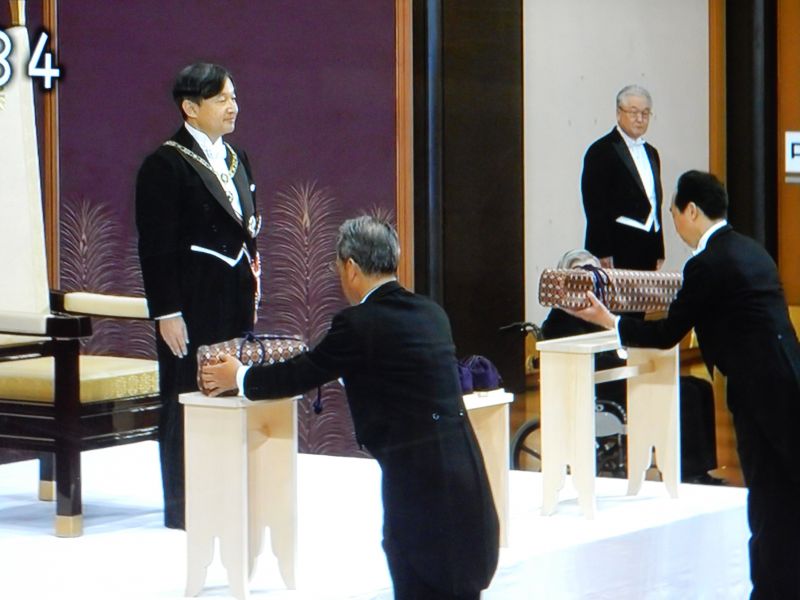
Two of the three regalia are brought into the Pine Room and placed before the new emperor.
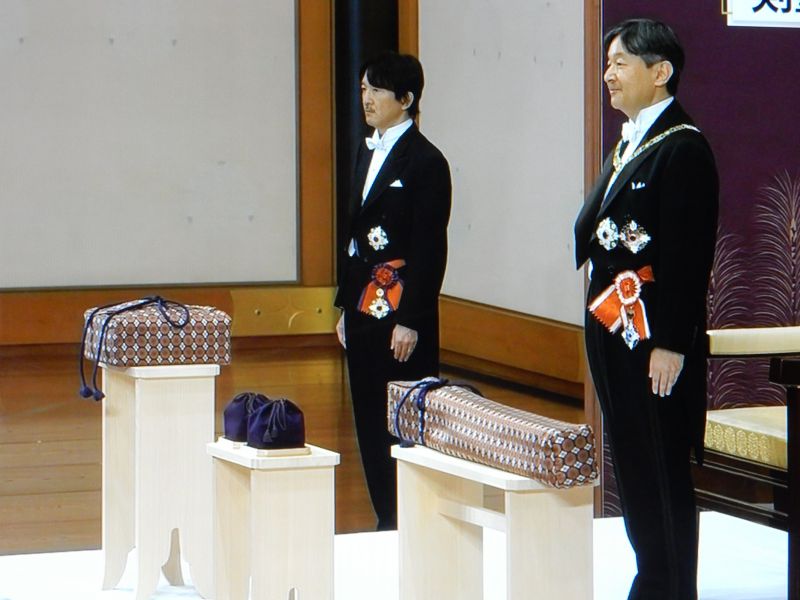
The emperor and heir apparent (Akishino, younger brother of Naruhito) symbolically receive the sacred regalia. Between them are the state and privy seals that are passed on to the new emperor.
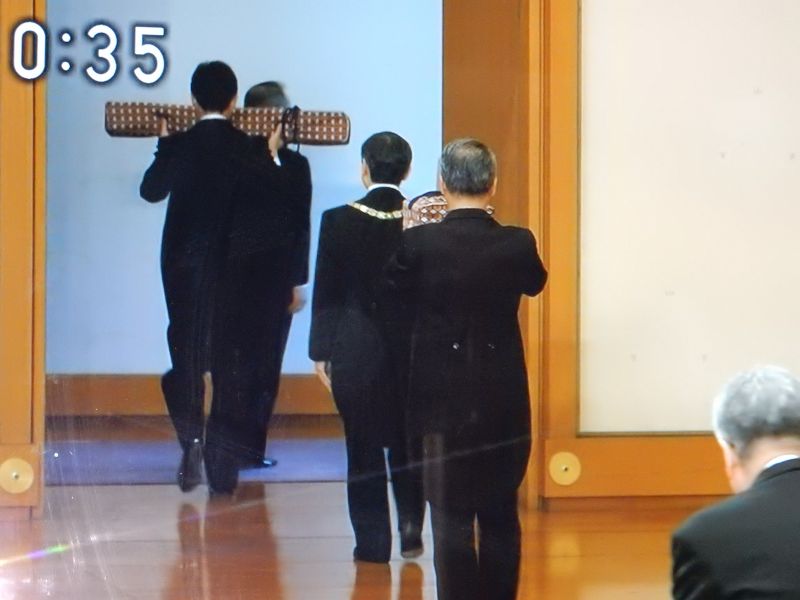
The sword precedes the emperor and the magatama follows Emperor Naruhito out of the room. The clock shows 10.35 – just five minutes after the ascension ceremony began! (The big celebrations will take place in the autumn.) As on the previous day, the circular mirror representing the Sun Goddess stays in the sanctuary, to which the new emperor straightaway proceeded to announce his succession.

